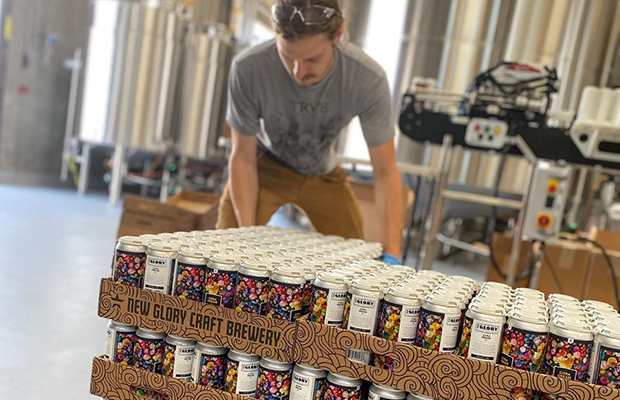
Health inspections are a big part of a brewery’s production. Being prepared and setting up guidelines can be a key between having a brewery continue as normal or being shut down for a while to fix any problems.
“Everyday, we take action to clean, sanitize, organize and purify everything to the standards of an organic facility,” explained Eel River‘s Jordan Utz. “We have been brewing organic for close to 20 years and inspections — scheduled and surprises — are part of the routine.”
In mid-December, Yellowhammer Brewery went from holiday celebrations for the staff one night to having the health department knocking on the door at 9 a.m. the next morning.
“You pretty much have to be ready for an inspection at any moment,” said co-founder and Yellowhammer GM Ethan Couch. “We do mock inspections every so often to remind the staff and managers what to look for. Every agency has their tick-list. It’s usually common sense, but knowing the law and having systems in place to help the staff keep organized makes a big difference.”
For Fat Bottom Brewmaster Drew Yeager, inspections have always been unannounced.
“We put a lot of focus on quality improvement during the expansion of the brewery, which I did not want to limit to just QA/QC,” he explained, with the first step of keeping everyone safe.
“I think the agencies that do the inspections understand considerations that need to be taken by ‘food manufacturers’, more than a lot of breweries do,” Yeager said. “Having a background in food science, I know that there is a large difference between producing chicken breasts and producing beer. Not everything applies and it can feel like unnecessary regulation.
“That being said, I have been in a brewery that I would not even want to use the bathroom in, let alone drink a beer from. If these inspections can decrease the number of breweries operating in sub-par conditions, then I think they are doing something positive for the industry as a whole.”
For Fat Bottom, that meant developing a safety training program, with staff having to go through annual training on all OHSA required areas for food manufacturers.
“My team and I developed different monthly audits to help identify areas for continuous improvement,” Yeager said.
Each month, the head of the brewery’s QA/QC department and Yeager perform audits for Quality Assurance, Quality Control, Good Manufacturing Practices, and Safety. Each audit generates a score similar to a health inspection and the audits are done unannounced throughout the month.
“After the scores are generated, I use them to identify areas that might need additional training and to develop goals for the next month for the brewery,” Yeager said. “It is important to point out, high scores are not common. If I would have set the scoring up to be easily obtained, it would not point out areas that are short of perfection and the audit would be worthless.”
Some sticking points that breweries know agencies will focus on include especially Good Manufacturing Practices.
“I have also heard lot traceability is a hot ticket item for the Department of Ag. and the FDA,” Yeager said. “I had to do a complete overhaul on our inventory management to build in lot traceability. We changed the software we use, which has allowed us to track everything that makes it into a packaged product.”
Once Fat Bottom had the foundation in place, it was time to put it to the test by performing mock recalls.
It wasn’t until a seminar during CBC 2017, that Yeager realized performing mock recalls allows breweries to test how much financial risk there is in the event of a recall.
“A brewery’s degree of lot traceability is, for the most part, inversely proportional to financial risk of a recall,” he said. “As a good rule of thumb, increasing your level of lot traceability from grain to glass, will directly decrease the amount of financial hit you take in the event of a recall.”





1 Trackback / Pingback